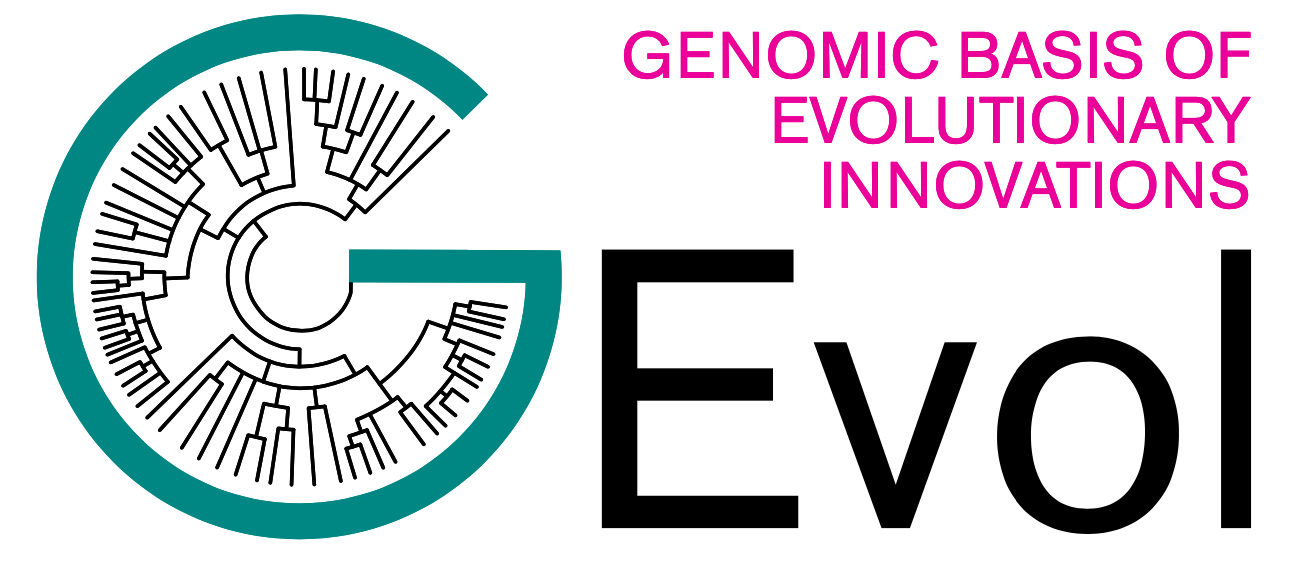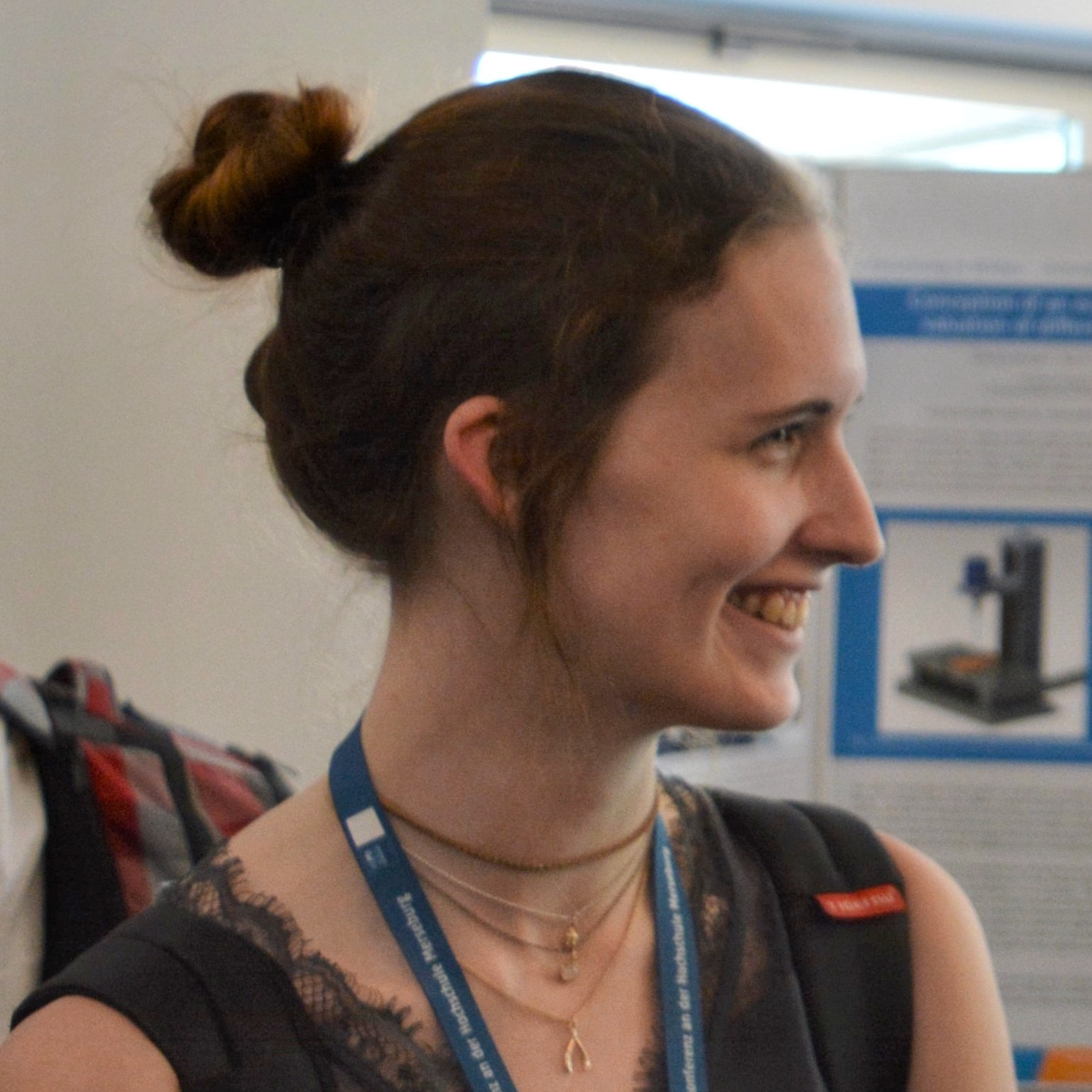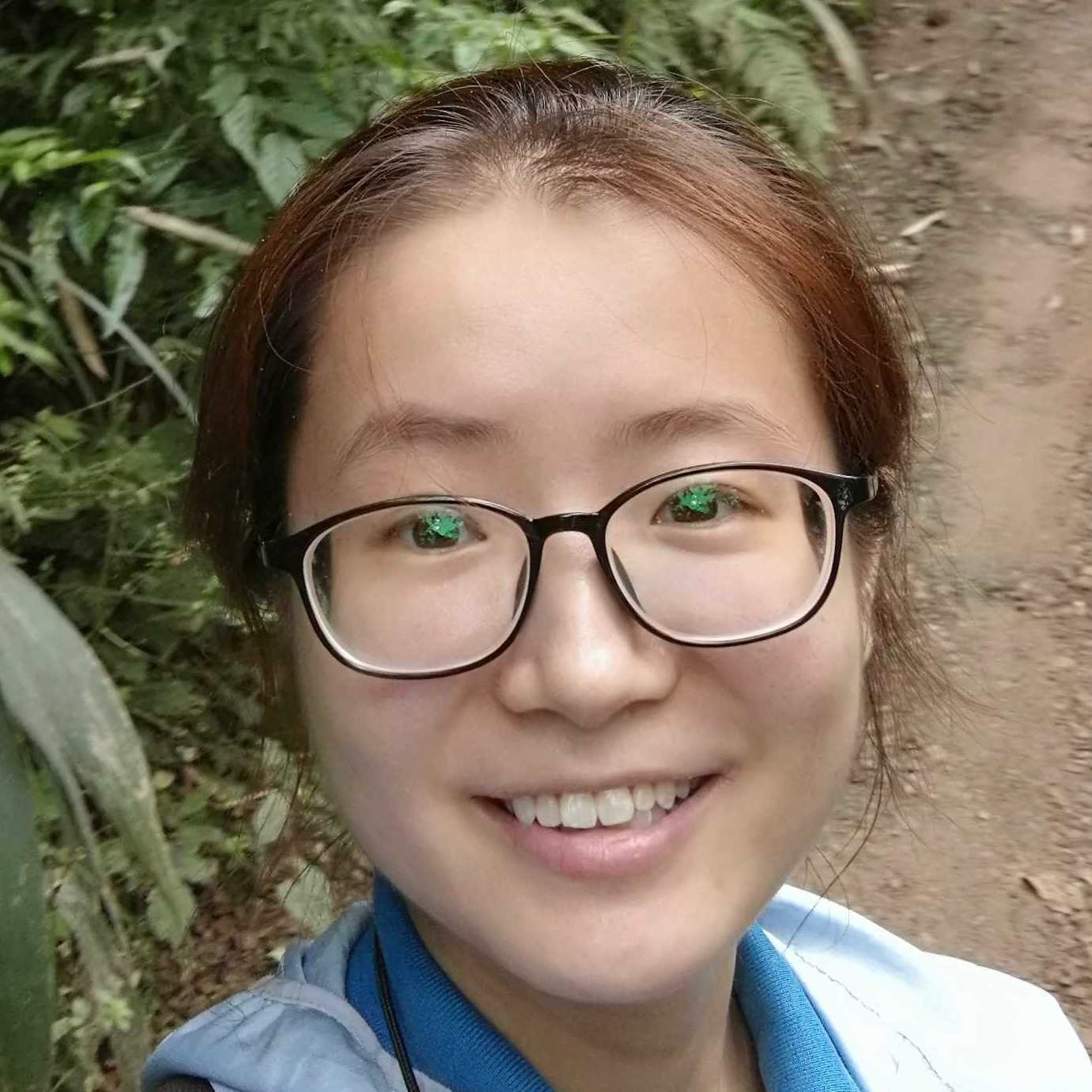Core-project: Global patterns of genomic innovations
New experimental and computational techniques provide exciting opportunities to study the evolutionary his- tory of genomes and to reconstruct the emergence of new traits from an integrated, phylogenomic perspective, way beyond the limited perspective of model species. GEvol will exploit these opportunities by connecting researchers from complementary fields, including genomics, bioinformatics, evolutionary ecology, molecu- lar evolution, and developmental biology to unravel the dynamics of major genomic innovations underlying novel traits in insects.
This project will knit together several strands of research from within the SPP and focus on the gain and loss of transcripts, genes, domains and regulatory motifs related to, e.g. sociality or mating systems; complex systems of communication and defence, developmental and morphological innovations and plasticity. The project will combine multiple genomic and other OMIC resources (e.g., genomics, transcriptomics and epigenomics), allowing for comparative evolutionary genomic studies to delineate past events, even many million years ago. We will study the roles of coding vs. regulatory changes, transposable elements, epigenetics, gene family evolution, copy number dynamics and structural genomic rearrangements.
In first place we will focus on genomic innovations, comprising the expansion or contraction of gene families, including the de novo emergence of novel genes and the prevalence and effects of gene losses. We will study the frequency at which novel protein domains are gained or lost and how they are rearranged. Through collaborations, we will develop tools for automated integration of new data from annotation pipelines with the objective to compute selection signatures across the whole
insect phylogeny and relate them to phenotypic innovations and transitions in gene regulation.
Project Team
Publications
Book chapter: Feldmeyer, Barbara; Bornberg-Bauer, Erich; Dohmen, Elias; Fouks, Bertrand; Heckenhauer, Jacqueline., Huylmans, Ann Kathrin; Jones, Alun RC; Stolle, Eckart and Harrison, Marc C (2023)
Comparative Evolutionary Genomics in Insects
Comparative and experimental approaches to the transcriptomics and genomic regulation of eusociality in the sweat bees
Eusociality is a major evolutionary innovation that has independently evolved several times across the insects. Using one lineage of sweat bee (Hymenoptera: Halictini) in which eusociality has arisen once, been elaborated upon and subsequently lost repeatedly, we propose to investigate variation in gene expression and its regu- lation associated with the gain and subsequent loss of eusociality. Through a cross-species comparison of the expression profiles and genome-wide chromatin accessibility of ancestrally solitary, eusocial and derived solitary species, we aim to reveal those genetic and regulatory changes that are associated with the gain, elab- oration and loss of sociality using RNA-seq and ATAC-seq approaches. These analyses will be strengthened by investigation of a facultative social species in a common-garden experiment to test proposed regulatory mechanisms underpinning the expression of sociality. Previous analysis of the sweat bees has suggested piv- otal roles for juvenile hormone and pheromone production, which provide candidates for in-depth analysis of gene expression and its regulation in response to social environment. Through a comprehensive analysis spanning changes in gene expression and its regulation through to phenotype, we aim to highlight functional transcriptomic and genomic changes that may have driven sociality in this plastic lineage of bees. Through sequence analyses of differentially expressed genes, we will also investigate how caste-conditional gene ex- pression influences expected patterns of protein evolutionary rates, thereby contributing to the understanding of the influence of eusociality on genome evolution.
Project Team
Conflict or cooperation between transposons and their Drosophila hosts?
Telomeres, repetitive DNA at chromosome ends, protect coding DNA from the shortening of chromosomes at cell replication. In most eukaryotes, telomeres are maintained by the enzyme telomerase. Accordingly, Diptera are unusual because they have lost telomerase. Alternative telomere-maintenance strategies include, among others, telomere-specific transposable ele- ments that maintain telomeres by replication at chromosomal ends. In our project FlyInnovation, we will determine if telomere-specific transposable elements are a genomic innovation for preserving telomeres in the absence of telomerase or simply selfish genetic elements avoiding host-silencing in a genomic safe-site.
Project Team
Dynamics of chromosome evolution in termites: Inbreeding, translocations and sociality
Inbreeding is widespread in insects and may have negative effects on individual fitness. In social insects, only a few individuals reproduce often with related individuals. Inbreeding could thus encourage kin selection and plays a role in the evolution of eusociality. One very interesting trait that may occur due to inbreeding is the formation of ring chromosomes and chromosome chains. Ring chromosomes have been observed in male meiosis of several termite species and may increase the rate of translocations via uneven break-ups. Furthermore, this also involves the sex chromosomes and may thus enable fast evolution of sex determination. Furthermore, inbreeding may impact male and female fitness differently, as has, for example, been shown for immunity in Lepidoptera and crickets.
While the X chromosome in termites shows at least in parts homology to that of cockroaches from which termites have evolved, the Y chromosome is young and must have appeared at the base of the termites. It is likely that this new sex chromosome has evolved from a fusion or translocation, possibly as a consequence of increased inbreeding with the onset of sociality. We will investigate chromosome evolution in termites to answer questions with regard to the evolution of sociality, inbreeding, and sex determination.
Project Team
Publications
Fraser, Roxanne; Moraa, Ruth; Djolai, Annika; Meisenheimer, Nils; Laube, Sophie; Vicoso, Beatriz and Huylmans, Ann Kathrin
Recurrent sex chromosome turn-over in termites
In: Preprint
Emergence, loss and regulation of de novo genes
In recent years, a major shift has occurred in understanding how new proteins arise and gain function. Earlier research assumed that small, adaptive changes in duplicates of established genes led to the evolution of new proteins with new functions. However, recent research showed that new protein-encoding genes can arise ”de novo” from previously non-coding DNA. Although some mechanisms underlying de novo gene emer- gence are now understood, no coherent picture of how and how often novel protein coding genes arise, gain function and spread through a population is available. The aim of this project is to characterise the short and long-term evolutionary dynamics of de novo gene emergence, loss and regulation. This will be done by sequencing genomes and transcriptomes of multiple Drosophila species spanning 3–40 million years of evo- lutionary divergence, including multiple individual genomes per species. This will allow us to precisely pin down the most recent events, such as the emergence of regulatory sequences that may have triggered the expression of an intronic or intergenic region. Including longer time scales will allow us to understand how often protein coding genes are created de novo and how often they are lost – most likely because they had not assumed a sufficiently important function to be retained by selection. Bioinformatic, population genetic and experimental functional genetic analyses will be performed to expand our understanding of how genomes change over time to give rise to new molecular and phenotypic traits.
Project Team
Publications
Grandchamp, Anna; Kühl, Lucas; Lebherz, Marie; Brüggemann, Kathrin; Parsch, John; Bornberg-Bauer, Erich
Population genomics reveals mechanisms and dynamics of de novo expressed open reading frame emergence in Drosophila melanogaster
In: Genome Research, 2023.
Evolution of epigenetic regulation in beetles (Coleoptera)
Insects show a remarkable evolutionary flexibility concerning the means by which epigenetic regulation is achieved. Even within the group of beetles (Coleoptera), some species rely on CpG methylation, while other species do not seem to show any functionally relevant levels of CpG methylation. Accordingly, genes encoding DNA methyltransferases (Dnmt1 and 3 genes) have been partially (e.g., Tribolium castaneum) or completely (e.g., Dendroctonus ponderosae) lost in some beetle species. Surprisingly, knock-down of these Dnmt genes can have strong and even lethal effects, even in species lacking CpG methylation, suggesting additional func- tions of DNMTs. On the other hand, it is still unclear, which other epigenetic processes could have replaced CpG methylation in such species.
In vertebrates, histone modification plays a major role in gene regulation. Many core components of the hi- stone modification system are even conserved from animals to plants. Both, histone modification and DNA methylation are global regulators that are mechanistically similar in the sense that they give rise to marks being set along the genome but distinct with respect to their material basis. However, the combined mode of control may range from the mere coexistence to indispensable and rich crosstalk.
Our project thus has the following three main aims: (1) Understanding the evolution of epigenetic regulation systems; (2) Elucidating alternative functions of DNA methyltransferases; (3) Assessing the mutual depen- dences between DNA methylation and histone modification. We will make use of the combined power of bioinformatics, sequencing technology to analyse epigenetic processes (Methyl-Seq, Cut&Tag, RNAseq) and functional validation (RNAi) in ten beetle species. Our project addressing the surprising evolutionary flexibil- ity in something as crucial as epigenetic regulation will thus provide urgently needed basic knowledge of the evolution of epigenetic regulation systems even more generally, beyond insects.
Project Team
Evolutionary genomics of sociality in beetles
Although sociality is rare in insects, various types of social lifestyles have evolved sporadically across a broad range of taxa. Sociality ranges from parental care of offspring in subsocial species to complex colonies with division of reproductive labour in eusocial insects, such as in ants, as well as some bees, wasps and termites. Several comparativea studies have revealed a broad range of genomic signatures related to the evolution of eusociality, especially in Hymenoptera (mainly ants and bees) and termites. However, little is known about the genomic origins of sociality in beetles or on the early transitions from solitary living to subsociality.
This is an important omission since subsociality, which occurs in at least 11 beetle families, is recognised as an important first step towards eusociality. With our project we aim to close this gap by investigating the genomic signatures related to the evolution of sociality in beetles. We put a particular focus on genomic mechanisms linked to the early stages of social evolution and aim to distinguish these molecular signals from those related to later elaborations towards eusociality.
We propose to study several species from two beetle families (carrion beetles and weevils) that cover several levels of subsociality, two origins of facultative and one origin of obligate eusociality.
With a broad range of genomic and transcriptomic analyses, we plan to infer detailed changes in genomic content, transcriptional regulation, protein evolution, and expression patterns, that are related to the tran- sitions from solitary to subsocial living and then the further elaborations towards obligate eusociality. We will support these inferences with investigations into the influence of purifying and positive selection, as well as genomic and transcriptomic upheavals caused, for instance, by transposable element activity. In the early stages of social evolution, we expect to find regulatory changes leading to the emergence of expression patterns associated with parental care. Greater adaptive changes, especially those affecting communication, nutrition, and immunity, are expected to occur along the progression towards obligate eusociality in wood- boring weevils. With genomic comparisons across all origins of insect eusociality (Hymenoptera, Isoptera and Coleoptera), we aim to identify molecular mechanisms that are universally associated with the rare evolution- ary progressions from solitary to eusocial species. Moreover, by combining these genomic and transcriptomic analyses with lab-based manipulations and RNAi experiments we aim to identify candidate gene families and networks that are integral to social behaviour. This project can bring us closer to understanding the genomic and regulatory mechanisms associated with the emergence of subsociality from solitary ancestors, and its rare advancement along the ultimate transition towards eusociality.
Project Team
Publications
A, Mikhailova; S, Rinke; MC, Harrison
Genomic signatures of eusocial evolution in insects.
In: Current Opinion in Insect Science, 2023.
Gene and genome duplication and phenotypic novelties – Insights from spiders and insects
Phenotypic novelties, such as the wings in insects or silk glands in spiders, facilitate adaptations to changing environments and are thus a major driver for evolutionary diversification. Expansion of genomic information by small-scale gene duplications (tandem duplications) or large-scale duplications (chromosomal or whole genome duplications) are important prerequisites for such novelties. Recent genomic analyses of different arthropod groups revealed at least one large scale duplication event at the base of the arachnopulmonates (e.g. spiders and scorpions). This finding provides a unique opportunity to compare the consequences of large-scale duplication events to small-scale duplications commonly observed in insects. Since vertebrates (that underwent several rounds of whole genome duplications), have hitherto been the only animals to study the consequences of large-scale duplication events, new genomic resources in arthropods now facilitate the comparison of large-scale duplication events across different animal groups. Duplicated genes that are bene- ficial for the organism are usually retained in the genome and subsequent diversification of gene expression and function contributes to phenotypic innovations. A systematic genome-wide analysis of gene duplications and their impact on phenotypic novelties is missing in arthropods. Therefore, we will combine comparative genomics, functional genomics and functional genetics approaches to reveal gene retention and gene loss patterns in insects and spiders and to functionally test the impact of gene duplications on phenotypic nov- elties. We will assemble and annotate high-quality reference genomes for underrepresented spider lineages and analyze them together with existing high-quality insect and chelicerate genomes. We will study intron architecture, transposable element content, chromatin accessibility and transcript expression levels to gain insights into the molecular mechanisms underlying the diversification of expression of gene duplicates. For selected gene duplicates we will analyze spatial and temporal expression in developing spider novelties like breathing organs or the silk apparatus, and the function of a subset of genes will be functionally validated via RNA interference mediated gene knock-down. Our work will provide unique insights into the extent, nature and consequences of gene and genome duplications and their importance for the evolution and diversification of phenotypic novelties.
Project Team
Publications
Janssen R, Pechmann M.
Expression of posterior Hox genes and opisthosomal appendage development in a mygalomorph spider.
In: Dev Genes Evol., 2023.
Genomic and gene regulatory basis of cuticular hydrocarbon diversification in aculeate Hymenoptera
Evolutionary innovation can result from various mechanisms from genomic to regulatory changes. Evolution- ary innovation is particularly interesting to study complex phenotypic traits that are vital for the organism, yet evolve rapidly. Cuticular hydrocarbon (CHC) profiles represent such a multifunctional trait in insects. CHCs cover the body of all terrestrial insects, protecting against water loss and carrying communicating informa- tion. CHC profiles can differ drastically between closely related species, conspecific sexes, and — in social species — between castes, suggesting a versatile underlying genetic machinery. Despite a generally good understanding of CHC biosynthesis, we still know little about the molecular mechanisms behind intra- and interspecific CHC variation and novel phenotypes. Our project aims to identify the genomic, transcriptomic, and epigenetic underpinnings of CHC diversification. We study 13 pairs of closely related yet chemically dis- tinct species that cover the major lineages of aculeate Hymenoptera (stinging wasps, ants, and bees), and also consider sex and caste differences in some of these species. We are sequencing the genomes of 13 species, and exploit available genomes where possible. Applying a cross-species comparative genomic approach, we will assess the relative importance of gene copy number variation, non-synonymous changes in coding sequences, alternative mRNA splicing, and other regulatory changes for fostering diversification of this multifunctional trait.
Project Team
Genomic evolution of underwater silk in caddisflies (Insecta: Trichoptera) and other freshwater arthropods
Aquatic insects have been neglected in genomic studies. However, they exhibit a suite of ecologically relevant key innovations and adaptive traits, the evolution and genetic background of which remain poorly understood. This project is designed to fill this gap by generating and analyzing genomic data to study the evolution of adhesive underwater silk in Trichoptera (caddisflies) and other (semi-) aquatic arthropods. Caddisflies exhibit the greatest diversity of underwater silk uses. This exciting key innovation has potentially facilitated their radiation across a multitude of different aquatic environments. Further, the unique properties of under water silk (polymerization in aquatic environment, enormous tensile strength, elasticity) makes this system interest- ing for applied sciences. Using a comparative genomics framework and targeting mechanisms such as gene family expansion, selection, presence/absence of genes and variation in gene sequences (e.g. repeat motifs in important silk gene clusters), the project aims to uncover the genomic basis of the evolution of genes and gene families encoding for silk phenotypes in Trichoptera and other freshwater arthropods. Further, by looking at different developmental stages, genetic modulation and regulation of the different properties of silk will be investigated, i.e., the role of gene expression and post-transcriptional modifications (e.g., alternative splicing) and potential methylation patterns in silk genes will be examined. Understanding the genomic evolution and molecular mechanisms of silk production will not only address questions regarding molecular adaptations responsible for the diversification in aquatic environments but also lay the foundation to gauge the potential of underwater silk for biomedical and biotechnological applications.
Project Team
Publications
Heckenhauer, Jacqueline., Stewart, Russel J.; Rios-Touma, Blanca; Tshering, Dorji; Frandsen, Paul B. and Pauls U., Steffen
Characterization of the primary structure of the major silk gene, h-fibroin, across caddisfly (Trichoptera) suborders
In: IScience (2023)
Frandsen, Paul B; Hotaling, Scott; Powell, Ashlyn; Heckenhauer, Jacqueline.; Kawahara, Akito Y.; Baker, Richard H.; Hayashi, Cheryl Y.; Rios-Touma, Blanca; THolzenthal, Ralph; Pauls U., Steffen and Stewart, Russel J.
Allelic resolution of insect and spider silk genes reveals hidden genetic diversity
In: PNAS (2023)
Sproul, John S.; Hotaling, Scott; Heckenhaauer, Jaqueline; Powell, Ashlyn; Marshall, Dez; Larracuente, Amanda M.; Kelley, Joanna L.; Pauls, Steffen U. and Frandsen, Pauls B.
600+ insect genomes reveal repetitive element dynamics and highlight biodiversity-scale repeat annotation challenges
In: Genome Research 2023
ImmuNov: genomics and epigenomics of immune innovations in insects
With the project ImmuNov, my aim is to understand how novel genes, and genes with a novel function, can integrate into pre-existing highly conserved gene networks and how their expression is regulated. As a functional model, I will use the innate immune system of insects, which is both highly conserved in its core set of genes and signaling pathways, and one of the fastest evolving biological functions, displaying a high rate of gene gains and losses across the insect phylogeny. To achieve this, I will perform a screen of immune- induced gene expression across phylogenetically diverse insect species, through experimental infections with two opportunistic pathogens, to identify common sets of immune genes and novel, taxon-specific immune- induced genes. I will test the role of chromatin accessibility as an epigenomic mechanism to control the expression of immune genes in response to infections and identify the cis-regulatory elements that govern the expression pattern of immune-induced genes. Finally, I will reveal the evolutionary history of immune- induced genes and test whether taxon-specific immune genes exhibit specific epigenetic signature. The recent development in molecular and computational technologies offers the possibility to design for the first time a large-scale comparative study of immune-induced transcriptomes couple with epigenomics in a controlled fashion to identify novel genes and reveal their regulatory mechanisms. This innovative project will provide insights into fundamental functional aspects of the genomic and epigenomic basis of immune innovation in insects beyond the Drosophila model, insights which are not attainable with comparative genomics alone.
Project Team
Recurrent genomic dynamics linked to parallel evolution of secondary phytophagy in Hymenoptera
The phytophagous lifestyle is a key innovation in insects and has, evolved in only one third of all insect orders. The evolution of, phytophagy likely involves fundamental behavioural and morphological changes ac- companied by chemosensory and metabolic adaptations. To date, the genomic basis and genetic, innovations related to evolutionary dietary shifts are poorly understood. Here we focus on two monophyletic groups within the, order Hymenoptera, particularly Aculeata and Chalcidoidea, which, descend from zoophagous ancestors but exhibit repeated reversals towards secondary phytophagy. These lineages e.g., the gall-wasps and pollen- collecting bees, switched to phytophagy, while the sister lineages retained a zoophagous lifestyle. In order to contribute to our knowledge of the evolution of nutritional capabilities in insects, we propose to comparatively study the genomic architecture in representative Hymenoptera that are linked to transitions to secondary herbivory. To shed light on evolutionary processes that shaped the diversity of nutritional adap- tations in Hymenoptera we
address the following main research questions: (1) Is parallel evolution at the phenotypic level reflected by parallel genome evolution? And (2), did similar genomic innovations appear when independent lineages re- alized convergent dietary transitions? Using comparative genomics and transcriptomics we aim to uncover genomic underpinnings of macroevolutionary dietary adaptations linked to e.g., the metabolism of plant sec- ondary compounds, the composition of odorant receptors, gustatory receptor families, or carbon dioxide re- ceptor genes. Further, we will study genomic changes underlying evolutionary dietary shifts, testing the repeatability of gene gain and loss, and rapid evolution in regulatory sequences, transposable element dynam- ics, and gene copy numbers. Results will be of major interest to scientists in the fields of functional genomics, systematic biology, and protein function analysis of insects, including those insects of economic importance.
Project Team
Recurring phenotypic loss: Repeatability of genome and regulatory evolution
The loss of phenotypes represents a type of evolutionary innovation and is a widespread phenomenon. Like phenotypic gain, it can be adaptive and lead to new life histories. However, compared to phenotype gain, it is less well studied. A particularly interesting case for evolutionary studies is the repeated loss of the same phenotype in independent lineages, because this allows for investigating the repeatability, and to some extent predictability, of evolution. Here we propose to study the genomic basis of repeated phenotypic loss using pollen collecting structures as example. These structures, called scopae, have evolved in several independent bee lineages and facilitated the evolutionary success of these lineages as pollinators. As typically only fe- male bees engage in foraging, scopae are sexually dimorphic. Interestingly, scopae have been lost in more than a dozen independent lineages of kleptoparasitic bees, along with certain behaviors and pilosity. Using a genome-wide comparative approach, we aim to reveal the genomic underpinnings that lead to the repeated evolution of that loss.
To this end, we will take advantage of existing high quality bee genomes and produce another 21 new high quality bee genomes of species with critical positions in the phylogenetic tree. This will provide us with more than 100 genomes as foundation for comprehensively studying genomic differences at all levels to reveal the emergence of that phenotypic loss within a phylogenetic framework. Using forward phylogenomic genotype to phenotype mapping and comparative genomics we will investigate genomic changes associated with phe- notypic loss, in particular loss of genes and regulatory elements, including the evolution of gene families. As scopae are a sexually dimorphic trait that seems to be gained and lost dynamically during evolution, we hy- pothesize that gene regulatory changes play an important role in achieving such phenotypic plasticity that can eventually get fixed in the genome. Hence, in addition to genomes, we will also produce transcriptomes and ATAC-Seq data from six species, precisely three pairs of host and kleptoparasitic species having gained or lost scopae, respectively, from males and females during development. With this setup, we will test whether similar changes are involved in plastic as well as evolutionary loss of scopae. We will integratively analyze these new OMICs data using state-of-the-art computational methods to reveal the role of coding versus reg- ulatory changes, transposable elements in genome architecture and regulation, gene family evolution and sequence changes with a focus on gene regulatory factors. We will further study how the genomic elements and factors are interacting in regulatory networks and how these networks have changed during evolution. In addition, we will investigate shifts in selective pressures acting on coding and non-coding sequences to understand how they might have conveyed the repeated loss of scopae.
Project Team
Revealing the genomic innovations during evolution of holometaboly
Holometaboly is a key innovation within insects and led to a very successful and diverse clade, the holometabolous insects, which have conquered all habitats and include important pests and vectors. However, many aspects
of the evolution of holometaboly remain enigmatic. Do holometabolous larvae correspond to hemimetabolan embryos or nymphs? How did the simplified morphology of first instar larvae evolve? How did immature de- veloping brains become functional in first instar larvae? What is the genetic control of shifted developmental timing (heterochrony)? What genes are specifically required for metamorphosis leading to the pupa, a novel stage? Genetic studies have so far mainly relied on the fly Drosophila melanogaster, which shows a quite derived mode of metamorphosis.
We want to develop and apply a genome-wide bioinformatics approach comparing hundreds of insect genomes to identify genes that show signs of increased sequence evolution at the base of aholometabolous insects. Sub- sequently, we test the functions of the genes emerging from this analysis in the red flour beetle Tribolium castaneum, an insect with insect typical metamorphosis. This approach has become possible only recently, as a large number of high quality insect genome sequences have become available and since genome wide functional screening was established in an insect with typical metamorphosis.
Project Team
The evolution of genome compartmentalization in the ant genus Cardiocondyla
Transposable elements (TEs) are major players in evolution. To advance our understanding of TEs in genome evolution, we will study evolutionary causes and consequences of extreme TE landscapes in the ant genus Cardiocondyla. The only so far studied species of this genus, the invasive C. obscurior, has evolved an extraordinary TE distribution with slowly evolving TE- poor and fast evolving TE-rich regions. By comparative genomic, population genomic and transcriptomic studies across several closely related species, we will unravel how such extreme genome architecture can evolve, how it affects genome evolutionary dynamics, and whether it can contribute to a species’ ability to adapt to changing environmental conditions. Further, by comparative analyses of ~170 genomes of ants, we will explore how TEs have impacted this large insect family and whether Cardiocondyla is indeed distinct from other ants given its remarkably unlikely genome structure. For these projects, we have already begun to develop a novel approach to identify, curate, classify, and annotate TEs across several genomes from the same clade aiming to generate high-quality TE annotations for accurate comparative studies.
Project Team
Synteny-Based Identification of Genomic Innoavations in Insects
Genome architecture in insects varies notably within and between taxonomic groups in terms of size, in- tron distribution, repeat content, and patterns of ancient gene linkage structures. The relationship between these patterns of genome evolution and phenotypic and behavioral diversity of insects is, however, not well understood. Secondarily increased or reduced genomes blurs the link between organismal complexity, and non-adaptive scenarios can explain the emergence of genomic complexity through population-genetic envi- ronments. Establishing a timeline of genome changes across a gradient of evolutionary distances, linked with a functional analysis of identified novelties, is thus essential to understand how genome innovation is linked to phenotypic sophistication.
In our SPP tandem project, we propose to systematically use syntenic conservation as a means of tracking orthology, local duplications, turn-over of repetitive elements, gains and losses of protein domains and coding capacity, and the emergence and decline of non-protein-coding genes. This synteny-based approach will go beyond the construction of reliable, unambiguous genomic alignments and thus overcome existing limits in classical methods of sequence-based gene phylogenies. This will, in particular, allow to unveil the evolutionary history of DNA elements that do not have 1-1 relationships across species, and to disentangle the evolutionary history also at phylogenetic distances that are too large to allow reliable sequence alignments.
To establish a scalable approach that can address innovation across a gradient of evolutionary distances, we will take advantage of the broad taxon sampling in the insect order Diptera (true flies) and its particularly deep sampling of the family Drosophilidae. Fly evolution has been previously characterized by distinct episodes of rapid increase in taxonomic diversity, and coarse comparisons of fly genomes have suggested fly specific innovations in patterning and signaling pathways. We will present the general outline of our project and comment on first results of our approach to catalogue signatures of innovation across 250+ fly genomes.
Project Team
Publications
Käther, K., Lemke, S., Stadler, P.F.
Annotation-Free Identification of Potential Synteny Anchors.
In: Bioinformatics and Biomedical Engineering., 2023.
The genomic basis of extreme sexual dimorphism in fireflies
Fireflies are well known for their charismatic lighted mating signals. Less known, fireflies exhibit a fascinat- ing variation in sexual dimorphism: some species show very mild sexual dimorphism whereas other species exhibit extreme sexual dimorphism. In species where extreme sexual dimorphism is present, females remain in a neotenic state with wing pads instead of fully developed wings. In some species the light organ is also sexually dimorphic, were males do not have a light organ but neotenic females do. Most importantly, this sexual dimorphism has evolved repeatedly across the firefly phylogeny.
Such strong variation in traits must be caused by underlying gene expression variation. Specifically, sexual dimorphism must be related to sex-biased gene expression. However, it is unknown how sex-biased gene expression evolves and if the same sex-biased genes are shared across the phylogeny. Furthermore, gene expression is most likely regulated by open chromatin accessibility. Nevertheless, the correlation between sex-biased open chromatin accessibility and sex-biased gene expression has not be shown previously.
In this project, we will study the evolutionary forces acting on gene expression using a phylogenetic frame- work. Only within a phylogenetic framework can we distinguish between all scenarios of gene expression evolution, for example, distinguishing directional selection from relaxed stabilizing selection. To address our questions, we will develop new methods and theory for the statistical analysis (Brownian motion and Ornstein-Uhlenbeck processes), specifically focusing on utilizing within-species variance in gene expression and sex-biased gene expression. Our novel methods will allow us to study the evolutionary forces acting on sex-biased gene expression, and if sex-biased gene expression is linked to extreme sexual dimorphism.
We will also generate the first homogeneous gene expression dataset (RNA-seq) for >10 species from at least 5 divergent genera, with multiple individuals per species and separated by body parts. Our study system, fireflies, is ideal for studying sex-biased gene expression evolution due to the repeated evolution of neoteny, but can be used as a reference and comparison to other non-sex-biased datasets too. Additionally, we will use ATAC-seq to generate chromatin accessibility data. With the ATAC-seq data, our project will produce novel insights into the correlation between gene expression evolution and chromatin accessibility evolution on a phylogenetic scale.
Taken together, our project will (a) generate a new comprehensive transcriptomic gene expression and chro- matin accessibility dataset, (b) novel methods to study gene expression and chromatin accessibility evolution for multiple species and individuals across a phylogeny, (c) advance our understanding of genome evolution with regards to the molecular mechanism underlying sexual dimorphism. This knowledge will advance our understanding which genomic elements are driving innovations in insects, such as sexual dimorphism.




















 >
>
















































